How to Choose a Portable Cornhole Set Hassle-Free
Ever lugged a floppy cornhole board that bends halfway through your toss?
It happens more than you think. Almost half of casual sets wobble and send your bag bouncing into the grass. I know, chasing it feels like a wild goose chase.
Choosing the right portable cornhole set means boards that fold up without a fight and bags that land with a soft thud. Aim for a surface at least 1 inch thick (solid enough not to flex). Legs that click into place in seconds. A frame you can sling over your shoulder to the park. By the way, my buddy found a midrange set that lasted three years of weekend games.
Here’s what to look for. Thick board surface. Foldable legs. Durable bags with tight seams and soft duck cloth (durable fabric). A steady feel when you tap it. Yes!
Ready for beach days, backyard barbecues, or tailgate meetups? Grab the right set and toss worry aside.
Key Criteria for Choosing a Portable Cornhole Set
Finding a set that feels solid, folds up with ease, and fits your budget? That’s the magic formula for fun on the go. Nothing kills the mood like floppy boards or bouncing bags. And lugging a log around? So not worth it.
Let’s dive into the top must-haves.
- Board Thickness
Choose boards at least 10 mm thick (that’s the depth from top to bottom). You’ll love the soft thud when your bag lands, no more surprise bounces. - Standard Dimensions
Go with boards 48 inches long and 24 inches wide. The hole should be 6 inches across. The back sits 12 inches high, the front 3 to 4 inches high. This gentle slope gives each bag a fair shot. - Material Options
Baltic birch plywood offers a smooth, dependable feel. Plastic or composite boards trade some bounce for lighter weight and easy cleaning. - Board Weight
Aim for 20-30 pounds per board. Light enough to lift with one hand. Heavy enough to stay put when the wind blows. - Foldability Features
Look for built-in hinges and legs that fold flat. Your boards should lie snug in your trunk, no wrestling them into a corner. - Price/Budget Tiers
Entry-level sets run $80-$120 and are great for casual backyard play. Mid-range at $150-$250 steps up the build quality. Premium kits over $300 bring pro-grade performance for tournaments.
With these tips, you’ll zero in on the perfect portable cornhole set for tailgates, park meetups, or beach weekends. Pick your feel, pack-up ease, and price point. Then get ready for endless rounds of tosses without breaking the bank.
Portable Cornhole Board Sizes: Regulation vs. Tailgate vs. Travel Options
Hey neighbor, choosing the right cornhole board size really changes the game and how you pack up afterward. Let’s break down the options so you can pick what fits your trailer or your hatchback.
Regulation-Size Boards
Regulation boards follow American Cornhole League (ACL) rules (the same setup they use in big tournaments). They’re 48 inches long by 24 inches wide, with a 9-inch hole and a back leg that’s 12 inches high. This slope gives you that consistent bounce and familiar toss every time. Perfect for parks, beaches, or a backyard match.
Tailgate & Travel Boards
But if your trunk’s snug, go for a smaller kit. These boards shrink to about 36 inches by 24 inches and usually have lower rear legs or folding feet. They still deliver a smooth toss but fold down to fit tight spots.
I once tried jamming a full-size set into my hatchback, oops, bean bags everywhere!
Materials and Durability Comparison for Portable Cornhole Sets
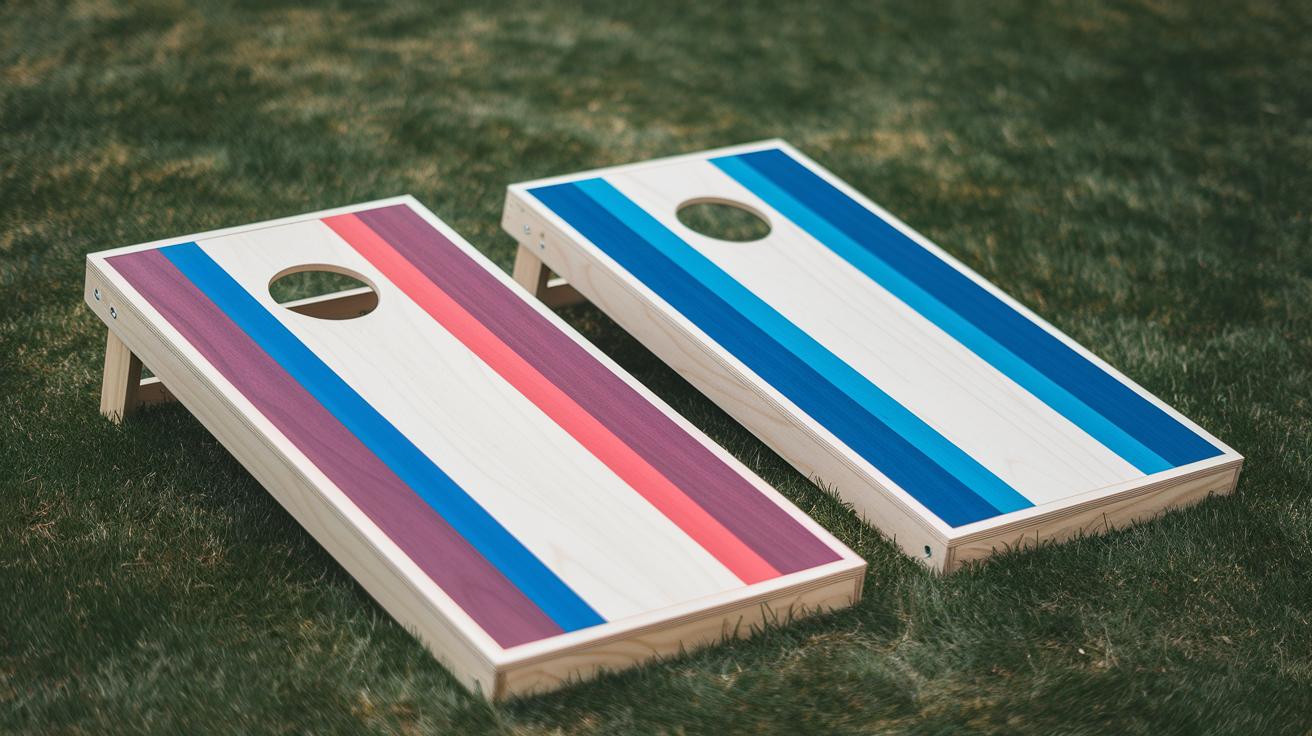
Picking the right cornhole board material changes how your game feels and how long it lasts. You might go for wood, plastic, or something in between. Wood boards often weigh more and give you a solid toss. Plastic and composite boards feel softer and stay light on your back. And all-weather wood is specially treated to stand up to rain and sun.
Durable boards help you skip the cracked surfaces and warped corners that throw off your aim. I once brought a bent board to a tailgate and my bean bags kept tumbling off the edge. Not fun! A quick look at the top materials puts you on track to find a board that keeps your game rolling, season after season.
Here’s a quick look at the main options:
| Material | Weight | Durability | Play Quality |
|---|---|---|---|
| Baltic birch plywood (layers of thin birch wood glued together) | ~30 lbs per board | High (resists warping) | Smooth, even bounce |
| Plastic/composite (plastic mixed with fibers for strength) | ~20 lbs per board | Medium (some flex) | Soft bounce, less rigid |
| All-weather wood (wood treated to resist rain and sun) | 25–30 lbs per board | Very high (weatherproof) | Stable, close to plywood |
Think about how you’ll pack up and haul your boards before you pick. Too heavy, and your shoulders cry to you. Too light, and a gust of wind might send your setup tumbling. For park days or picnics, I lean toward plastic/composite or all-weather wood, they strike a nice balance of weight and strength. Then just grab your bean bags, toss them in a weatherproof bag, and off you go!
Portable Cornhole Set Portability Features: Hinges, Handles, Latches, and Cases
Hinges, Handles, and Latches
I love folding cornhole boards that snap together like a book. Solid hinges (joints that let the legs swing) lock your legs in place in seconds. Just flip them open and feel that click, no wobble underfoot. And since these metal parts live outside, pick ones rated for outdoor use so they won’t rust after a rainy afternoon.
Handles matter too. Those simple cutouts can pinch your fingers after a picnic. I’ve found molded handles with rounded edges feel smooth under your palm, like cradling a soft lunchbox. Um, almost forgot the latches (fasteners). Clip-ons might rattle on bumpy roads. Instead, go for spring-loaded or twist-lock latches that snap boards snug. No clanging, just one tidy package in your trunk.
Carrying Case Options
A solid case turns your tailgate trek into a breeze. Soft-shell cases with padded walls hug boards and bean bags so they don’t pick up dings. Park on gravel or stash boards in a shared shed? A hard-shell case adds armor without feeling like a pack of bricks.
Check straps and pockets. Wide shoulder straps or backpack-style options free your hands for coolers and folding chairs. Some cases even tuck bean bags, chalk lines, or scoreboards into mesh pockets or Velcro pouches. One trip, everything in place, no extra dash back to the car.
Weatherproofing and Outdoor Performance of Portable Cornhole Sets
Ever watched dew bead on a leaf? That’s exactly what a good sealant (a protective coating) does for your cornhole boards. It makes water roll right off instead of seeping in and swelling the wood. And if you pick a marine-grade sealant (the tough stuff they use on boats), your boards shrug off spills or quick rain showers like champs.
No more warping.
Next, a UV-resistant finish (a coat that blocks the sun’s harsh ultraviolet rays) locks in those bright team colors. Scratch-resistant topcoats keep the surface feeling smooth, even after dozens of rounds. Bean bags slide perfectly, without scuffing or leaving rough bits behind.
For true all-weather play, hunt for “outdoor-grade” varnish (a clear coat made to repel water). Skip the tarp. Rain, morning fog, or backyard sprinklers just bead up and roll away, no soaking.
Over time, sun, rain, and temperature swings will still challenge your set. But here’s the trick: give your boards a fresh sealant coat each year. A quick touch-up keeps that sunny-day feel, even on a chilly fall afternoon.
Bean Bag and Accessory Selection for Portable Cornhole Sets
Official cornhole bags measure about six inches by six inches. They’re made from duck cloth (a tough cotton canvas). You can feel the rough weave in your hands. The bags have double-stitched seams and reinforced edges. Those stitches keep bags from bursting when you give them a solid toss or pack them in your trunk. And they help each bag hold its boxy shape game after game.
Corn-filled bags use natural corn kernels and weigh about fourteen to sixteen ounces each. They land with that familiar thunk on the board. But leave them in a damp spot and they’ll soak up rain or morning dew. Then they feel heavy and can grow mildew. By the way, I once forgot mine in the grass overnight. Oops. Resin-filled bags have plastic pellets inside and also weigh fourteen to sixteen ounces. Those pellets stay dry, resist mold, and feel just right even after a surprise shower or a sweaty day at the beach.
For years of outdoor fun, pick bags made from marine-grade fabric (waterproof cloth) or a performance blend that dries fast and shrugs off scuffs. I like to toss mine into a small mesh bag or zippered pouch between rounds so air can get in. Then I throw my chalk and score markers in a little drawstring sack. Soon you’ll be all set for tailgate nights, park meetups, or backyard showdowns. No soggy surprises. No extra trips to the car.
Pricing, Brands, and Reviews of Portable Cornhole Sets
Entry-level ACL Rec kits run about $80 to $120. You get basic plywood boards (thin layers of wood glued together) with a light sealant coating (a thin protective layer on the wood) and corn-filled bags that land with that familiar thunk. They’re perfect for a laid-back backyard game or a tailgate with friends, and they strike a nice balance between cost and quality. I once scooped up a set for a beach day, and it stayed solid through dozens of rounds.
Stepping up to the ACL Comp tier, you’re in the $150 to $250 zone. Boards here are thicker and get a tougher sealant coat so water beads right off. Resin-filled bags (bags packed with tiny plastic beads) shrug off damp grass like a champ. Some kits even pack into soft-shell or hard-shell travel cases.
Most mid-range boards weigh about 25 pounds, so they’re still easy to haul to the park. And if you push past $300, you’re in premium cornhole territory. Pretty sweet.
Brands like GoSports and Tailgate Toss square off in this space. GoSports adds extra leg bracing and a padded carry case. Tailgate Toss leans into bold graphics and reinforced hinges. We compared them head-to-head in our guide so you can pick the right one for your crew.
When you read reviews, look for user notes on weight, durability, and warranty details. Many premium sets come with a two-year guarantee against warping or broken hardware. Nobody wants a bent board mid-match, right? Picking a brand that stands behind its gear means fewer surprise repairs and more bean-bag battles without extra costs.
Setup, Storage, and Maintenance for Portable Cornhole Sets
Getting your cornhole set ready takes no tools and only a few minutes. You fold out the legs until you hear that smooth click and push the pins in place (the little locks that hold everything tight). And just like that, you’re ready to start tossing bean bags.
When it’s time to pack up, reverse the steps: fold the legs flat, line them up, and slide your boards into their carrying cases without any fuss. This simple breakdown protects the hinges (the pivot points) and latches (the little hooks) so everything stays in good shape. Whether you’re moving from your backyard to a tailgate, you’ll enjoy the same easy setup every time.
After a round of play, give your boards a quick wipe-down or a gentle rinse with a soft cloth. Make sure they’re completely dry, no damp spots. Oops, I once left a board damp and ended up with a weird stain, lesson learned!
For extra protection after rain, stash your boards in a ventilated case so leftover moisture can evaporate. Then once a year, swipe on a thin coat of sealant (a protective layer that stops warping) or some wax. And keep your bean bags in mesh pouches or breathable bins so air can flow and mildew can’t settle in.
Final Words
You’ve learned the must-have factors: board size, material, weight, foldable legs, weatherproof finishes, and cost tiers. We compared regulation vs travel dimensions, wood vs plastic, hinges and handles, plus cases for safe transport.
We covered bean bags and fill materials, along with top brands at every price point. Then we unpacked simple setup steps, cleaning tips, and storage ideas to keep your kit game-ready.
Now you’re set to find your ideal travel cornhole kit. With this guide on how to choose a portable cornhole set, you’re about to elevate every backyard game!
FAQ
What features make the best cornhole boards?
The best cornhole boards balance sturdy 10 mm thickness, a smooth surface for consistent bounce, lightweight foldable design, tight-fitting latches, and a finish that resists moisture and scratches for lasting outdoor fun.
What are the standard cornhole board dimensions?
Standard cornhole boards measure 48″ by 24″ with a 6″ hole centered 9″ from the top. They slope down from a 12″ rear height to a 3–4″ front for proper gameplay.
Where can I buy cornhole sets near me or online?
You can find cornhole sets at local sporting goods stores, big-box retailers like Walmart, and online marketplaces such as Amazon, with options spanning budget, mid-range, and premium kits.
What are the official cornhole rules?
Official cornhole rules call for players to alternate tossing 14–16 oz bags from behind the front edge, scoring three points for a board hit and five points for a hole shot, with play continuing until 21 points.
How do professional cornhole boards differ from recreational boards?
Professional boards meet ACL specs with thicker Baltic birch plywood, CNC-cut holes, reinforced frames, premium sealants, and hard cases. Recreational boards often use basic plywood and softer finishes for casual play.
What backyard games complement cornhole?
Popular backyard games that pair well include giant Jenga, horseshoes, Connect Four, ladder toss, and tic-tac-toe for extra outdoor fun and friendly competition.

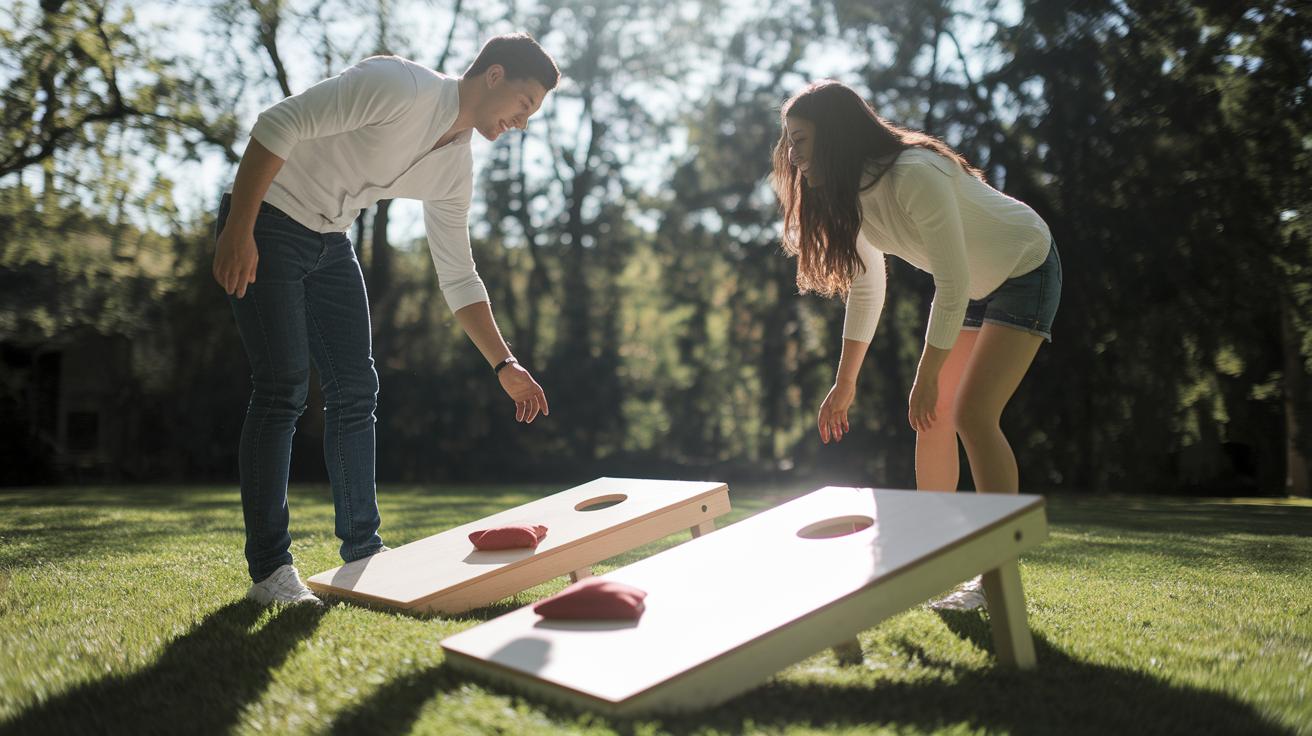

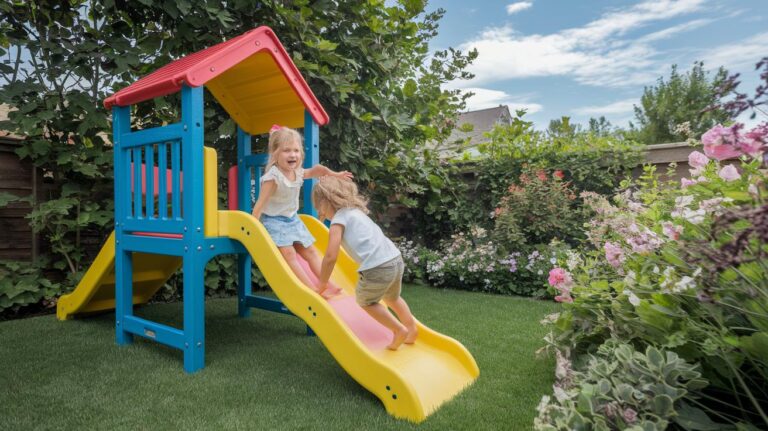
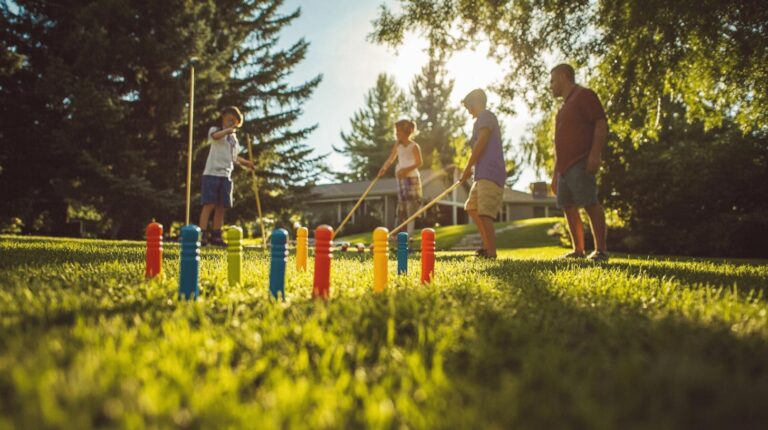
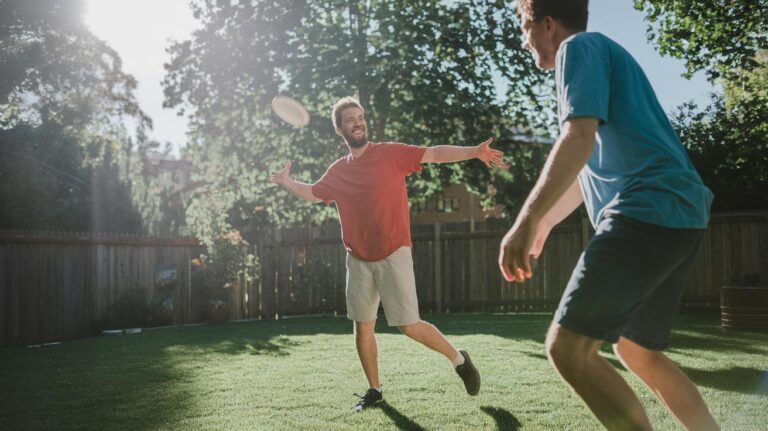
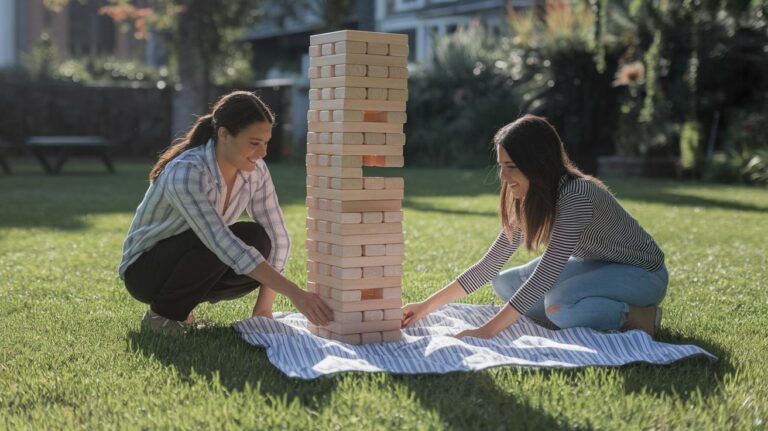
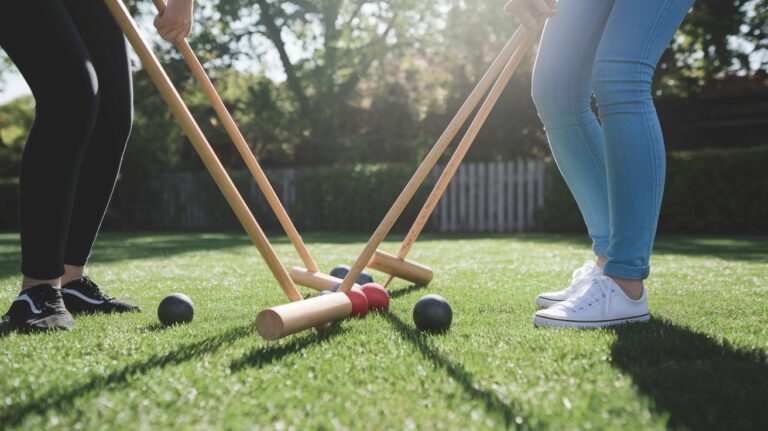
One Comment